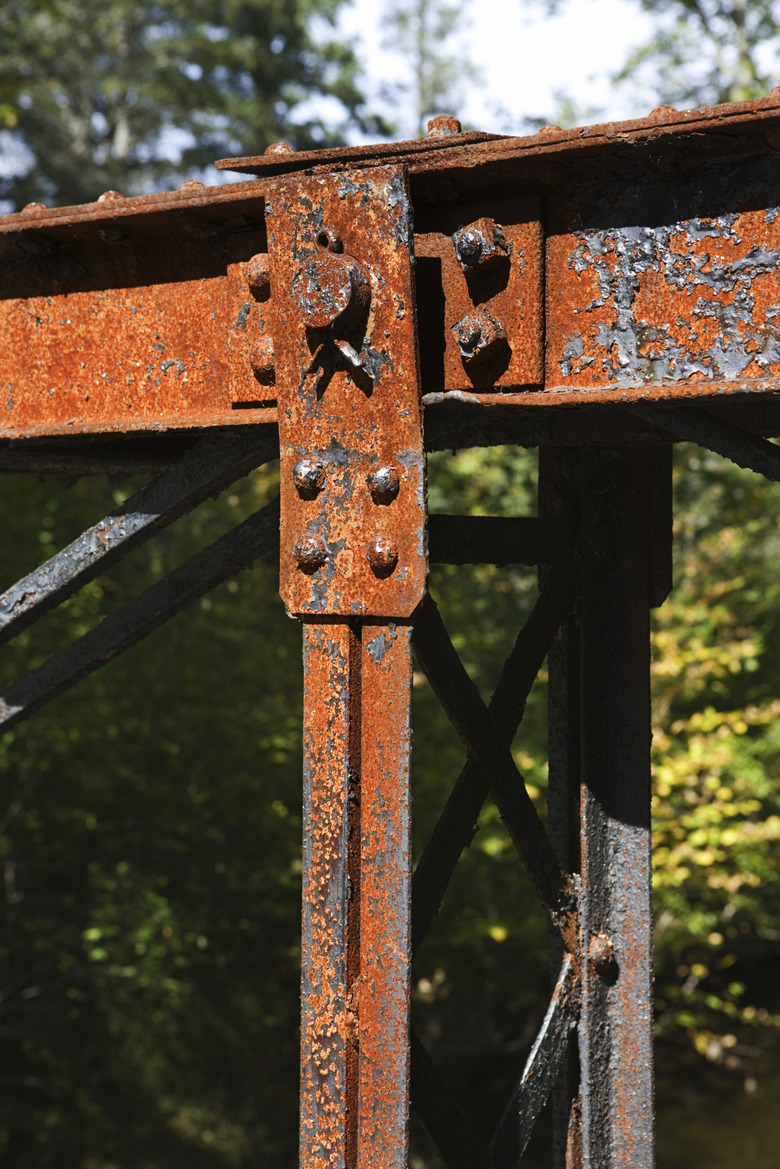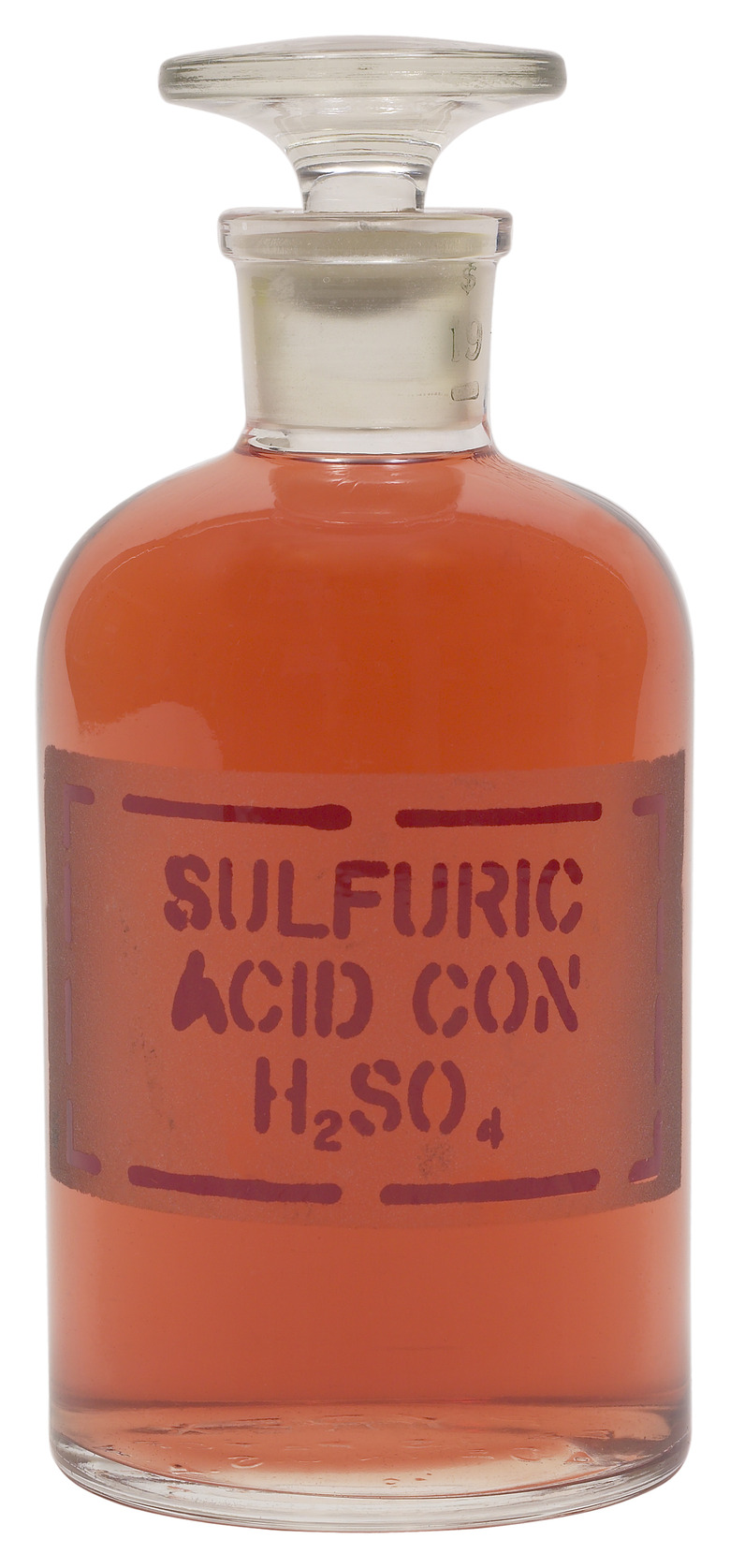Corrosion Resistance Of Stainless Steel To Sulfuric Acid
With just a few exceptions – gold, palladium and platinum – all metals corrode. This includes stainless steel. A common misconception is that stainless steel is 100 percent corrosion resistant as explained by eStainlessSteel.com. While its corrosion resistance is incredible, stainless steel will corrode under certain circumstances. It's simple to determine what it takes to make it happen — and then avoid it — by understanding the reasons why stainless steel has such a strong resistance to corrosion.
Properties of Stainless Steel
Properties of Stainless Steel
Stainless steel's ability to resist corrosion comes from the chromium within the metal. Stainless steel contains 10 ½ percent chromium, which reacts with oxygen to create a protective barrier or protective film. This chromium layer is 130 Angstroms — or millionth of a centimeter — in thickness according to WorldStainless.org. Two factors that contribute to the holding strength of this protective, passive layer of chromium are temperature and oxygen availability. Increasing heat weakens the layer and the chromium needs to react with oxygen to create the protective layer.
Anodic vs. Cathodic Electrodes
Anodic vs. Cathodic Electrodes
Sulfuric acid is commonly referred to as battery acid. The anode end of a battery is corrosive, while the cathode end is passive and no corrosion occurs. This corrosion happens when two different metals are introduced within the same electrolyte environment. An electrolyte, also known as a corrodant, is any liquid which can pass electric current; this includes water as the Galvanic Corrosion Chart from ThelenChannel.com illustrates.
Effects of Corrosion
Effects of Corrosion
There are eight types of corrosion in metals as outlined by eStainlessSteel.com. A uniform attack, or general corrosion, occurs with the overall breakdown of the protective film on the surface of the metal. Crevice corrosion is commonly found in crevices where oxygen is restricted and in low pH environments like sea water. Pitting occurs when the protective layer of the stainless steel is penetrated creating an anodic spot. Galvanic corrosion happens when two different metals are placed in an electrolyte environment; the cathode removes metal from the anode. Intergranular corrosion is heat induced; the carbon in the steel uses the chromium to create chromium carbide, thus weakening the protection surrounding the heated area. Selective leeching is a type of corrosion wherein a fluid will simply remove metal during demineralization or deionization. Erosion is caused by an abrasive fluid flowing past a metal at high velocity, removing its protective layer. Stress corrosion, or chloride stress corrosion, occurs when cracks occur while the metal is under tensile stress.
Properties of Sulfuric Acid
Properties of Sulfuric Acid
Sulfuric acid is quite corrosive in water although it makes a poor electrolyte due to the fact that very little of it will dissociate into ions, according to Chemical Land 21's description of sulfuric acid. The concentration of the acid is what determines its corrosive effectiveness, as British Stainless Steel Association (BSSA) explains. Most types of stainless steel can resist low or high concentrations, but it will attack the metal at intermediate temperatures. The concentration is affected by temperature.
Grades and Resistance of Stainless Steel
Grades and Resistance of Stainless Steel
There are different grades of stainless steel and each resists sulfuric acid corrosion differently as BSSA explains. 18-10 stainless steel is susceptible to rapidly increasing temperatures. It can resist an acid at a concentration of 5 percent at room temperature. 17-25-2.5 has an advantage over the 18-10 as it can handle up to 22 percent at room temperature again, rising heat will render this steel useless above 60 degrees Celsius. Duplex Steel (2304) is more resistant as the heat rises. The room temperature numbers of the Duplex Steels are about the same as the 17-12-2.5, but only slightly fall with heat allowing eight percent at 80 degrees Celsius. 2205 has a room temperature concentration allowance of up to 40 percent which falls to 12 percent at 80 degrees Celsius. The Superduplex steel offers a slight improvement with 45 percent at room temperature. 904L steel was specifically developed to be able to handle sulfuric acid. 904L can handle the whole range of concentration up to 35 degrees Celsius.
Cite This Article
MLA
Wiley, Pheori. "Corrosion Resistance Of Stainless Steel To Sulfuric Acid" sciencing.com, https://www.sciencing.com/corrosion-stainless-steel-sulfuric-acid-8723157/. 24 April 2017.
APA
Wiley, Pheori. (2017, April 24). Corrosion Resistance Of Stainless Steel To Sulfuric Acid. sciencing.com. Retrieved from https://www.sciencing.com/corrosion-stainless-steel-sulfuric-acid-8723157/
Chicago
Wiley, Pheori. Corrosion Resistance Of Stainless Steel To Sulfuric Acid last modified March 24, 2022. https://www.sciencing.com/corrosion-stainless-steel-sulfuric-acid-8723157/


